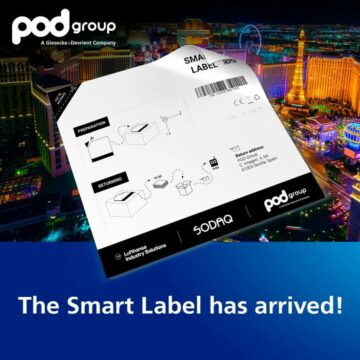
Understanding the power consumption behavior of an IoT device goes beyond relying solely on data sheet information. It involves conducting a critical analysis to assess the battery’s performance in the unique scenario relevant to your project.
This process, also known as IoT device battery profiling, provides insights into the battery’s efficiency, stability, and suitability for deployment.
Defining a Battery Profile
A battery profile is not just a general overview; it is a tailored description of how a battery discharges under specific loads in particular environments. You can find such profiles in the battery’s data sheets.
To select the ideal battery for your solution, you need to create profiles that align with your device’s power requirements. Additionally, it is beneficial to profile several battery alternatives from different brands, batches, and temperatures to gain a thorough understanding of their behavior.
By following these steps, you can gain a deeper understanding of the power consumption behavior of your IoT device and make informed decisions when selecting the most appropriate battery for your project.
Accelerated Battery Profile
Creating a battery discharge profile that aligns with your device’s current consumption profile may require several months or even years. Thus, it is essential to develop an accelerated discharge profile. Here are some best practices to create an accurate and helpful profile:
- Maintain High Discharge Consistency: Coin cell batteries are particularly sensitive to high discharge, so it is crucial to match your device’s peak current. Lithium-ion rechargeable batteries can withstand higher discharge currents, while alkaline batteries fall in between.
- Shorten Cycle Time: Determine the low discharge time the battery requires to recover.
- Increase Sleep Current: Ensure the battery can recover even in high discharge. Consult with Manufacturers: Seek assistance from battery manufacturers to verify your assumptions for the batteries you want to profile.
Accuracy Considerations
It’s worth noting that precisely matching the discharged energy in the accelerated profile to the original profile may not be feasible, which could affect the profile’s accuracy. The less acceleration used, the more accurate the results, but this method’s level of accuracy is usually adequate for IoT implementations.
It ensures a comprehensive real-world understanding of the battery’s performance, contributing to successful IoT solutions.
An Example
We provide insights from a customer project where battery selection was performed for an IoT LoRaWAN waste management application. We profiled two distinct electro-chemistries encompassing six brands, including multiple samples from each brand.
The profiling was carried out at room temperature, using an accelerated battery profile developed with input from battery manufacturers. Comparing samples from multiple manufacturers allowed us to evaluate how different form factors and chemical compositions influenced the results.
Profiling the batteries in various environments could be the next logical step to observe the available capacity deviation from these controlled profiles, given that the profiling occurred at room temperature.
Battery Profile Analysis
- LM17500: Three samples of this battery were profiled, yielding an average capacity of approximately 3050 mAh before reaching the cut-off point, slightly higher than the data sheet capacity.
- CR123A: Two batteries were profiled, with an average capacity of about 1600 mAh, consistent with the data sheet for that specific temperature.
- AAA: These batteries had capacities ranging from 1080 to 1150 mAh, with an average of around 1100 mAh. The data sheet indicated a capacity of 1200 mAh.
- AA: The AA batteries showed a wider range of capacities, from 2420 to 2730 mAh, with an average of approximately 2590 mAh. For example, the data sheet for Varta indicated a capacity of 2950 mAh.
Our profiling process identified performance nuances across different battery brands, chemistries, and form factors. These insights are crucial for making informed decisions specific to the device and use case, going beyond the data sheet capacities.
Conducting profiling in diverse environmental conditions, particularly temperature, could further enhance our understanding and contribute to a more resilient IoT device design.
Replaying the Battery Profiles
Accurately measured battery profiles provide a more realistic and tailored understanding of the battery’s capacity for a specific application, surpassing the information provided in mere data sheets when estimating battery life.
Apply profiled battery discharge to device to determine actual usable capacity, enhancing estimation accuracy. The actual usable capacity depends on the behavior of the device itself, and in some cases, we have encountered as low as 20 percent of the measured capacity.
Tools can replay these battery profiles, effectively serving as profiled batteries for the IoT device. Adjust battery emulator capacity, monitor device shutdowns/reboots to reveal realistic usable capacity. This ensures a more precise understanding of the battery’s potential in the context of the specific application.
Refined Battery Selection
We propose a technique: select battery based on use case, power profile IoT device, and refine selection based on device power behavior. This nuanced approach enables developers to make well-informed decisions that boost battery life.
- SEO Powered Content & PR Distribution. Get Amplified Today.
- PlatoData.Network Vertical Generative Ai. Empower Yourself. Access Here.
- PlatoAiStream. Web3 Intelligence. Knowledge Amplified. Access Here.
- PlatoESG. Carbon, CleanTech, Energy, Environment, Solar, Waste Management. Access Here.
- PlatoHealth. Biotech and Clinical Trials Intelligence. Access Here.
- Source: https://www.iotforall.com/refined-battery-selection-with-battery-profiling
- :is
- :not
- :where
- 1
- 1100
- 20
- a
- About
- accelerated
- acceleration
- accuracy
- accurate
- across
- actual
- Additionally
- adequate
- adjust
- affect
- align
- Aligns
- allowed
- also
- alternatives
- an
- analysis
- and
- Application
- approach
- appropriate
- approximately
- ARE
- around
- AS
- assess
- Assistance
- assumptions
- At
- available
- average
- based
- batteries
- battery
- Battery life
- BE
- before
- behavior
- beneficial
- BEST
- best practices
- between
- Beyond
- boost
- brand
- brands
- but
- CAN
- capacities
- Capacity
- carried
- case
- cases
- cell
- chemical
- Coin
- comparing
- comprehensive
- conditions
- conducting
- consistency
- consistent
- consult
- consumption
- context
- contribute
- contributing
- controlled
- could
- create
- critical
- crucial
- Current
- customer
- cycle
- data
- decisions
- deeper
- depends
- deployment
- description
- Design
- Determine
- develop
- developed
- developers
- deviation
- device
- different
- distinct
- diverse
- each
- effectively
- efficiency
- enables
- encompassing
- energy
- enhance
- enhancing
- ensure
- ensures
- environmental
- environments
- essential
- evaluate
- Even
- example
- factors
- Fall
- feasible
- Find
- following
- For
- form
- from
- further
- Gain
- General
- given
- Goes
- going
- had
- Have
- helpful
- here
- High
- higher
- How
- HTTPS
- ideal
- identified
- implementations
- in
- Including
- indicated
- influenced
- information
- informed
- input
- insights
- into
- involves
- iot
- IoT Device
- IT
- itself
- jpg
- just
- known
- less
- Level
- Life
- loads
- logical
- Low
- make
- Making
- management
- Manufacturers
- Match
- matching
- max-width
- May..
- measured
- mere
- Monitor
- months
- more
- most
- multiple
- Need
- next
- noting
- nuanced
- nuances
- observe
- occurred
- of
- on
- or
- original
- our
- out
- overview
- particular
- particularly
- Peak
- percent
- performance
- performed
- plato
- Plato Data Intelligence
- PlatoData
- Point
- potential
- power
- practices
- precise
- precisely
- process
- Profile
- Profiles
- profiling
- project
- propose
- provide
- provided
- provides
- range
- ranging
- reaching
- real world
- realistic
- Recover
- refine
- refined
- relevant
- relying
- replay
- require
- Requirements
- requires
- resilient
- Results
- reveal
- Room
- scenario
- Seek
- select
- selecting
- selection
- sensitive
- serving
- several
- sheet
- sheets
- showed
- SIX
- sleep
- slightly
- So
- solely
- solution
- Solutions
- some
- specific
- Stability
- Step
- Steps
- successful
- such
- suitability
- surpassing
- tailored
- technique
- than
- that
- The
- the information
- their
- These
- this
- thorough
- three
- Thus
- time
- to
- two
- under
- understanding
- unique
- us
- usable
- use
- use case
- used
- using
- usually
- various
- verify
- want
- was
- we
- were
- when
- which
- while
- wider
- with
- worth
- years
- yielding
- you
- Your
- zephyrnet












